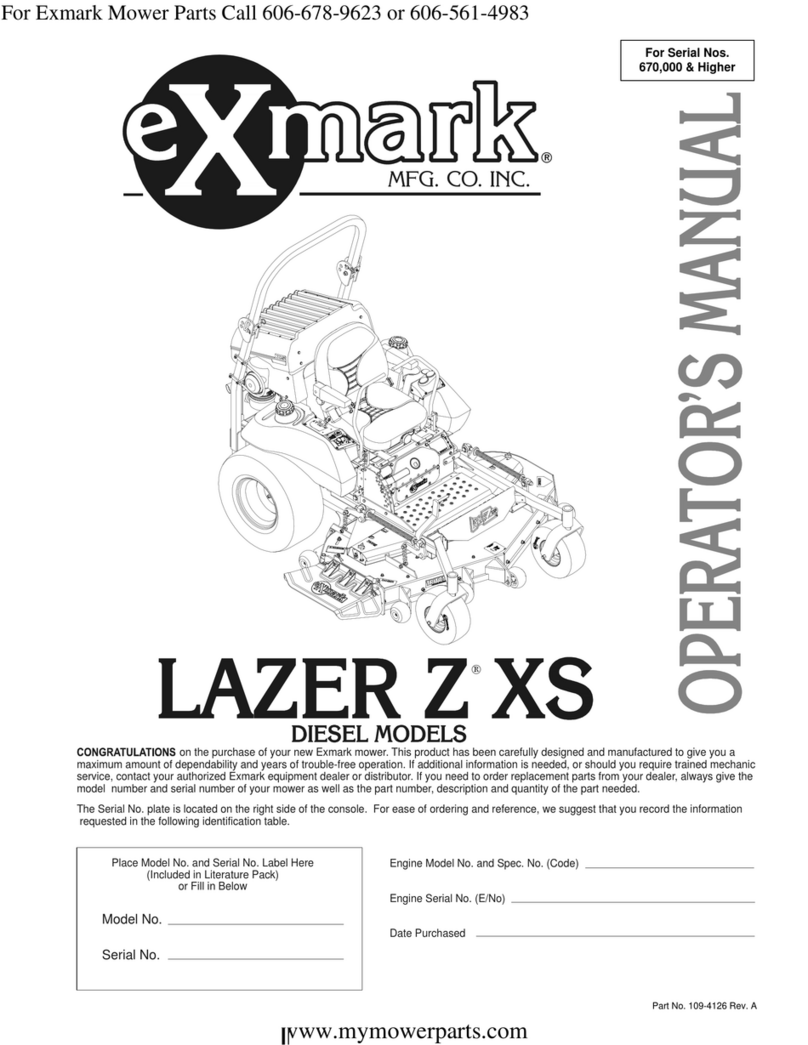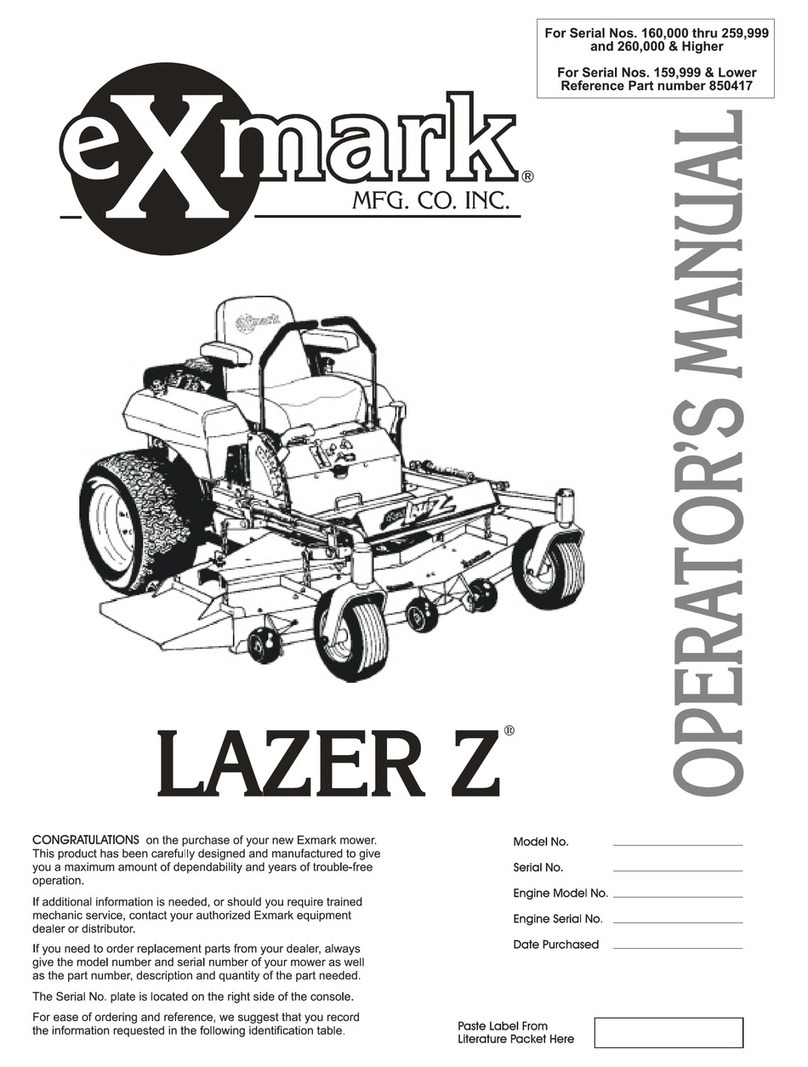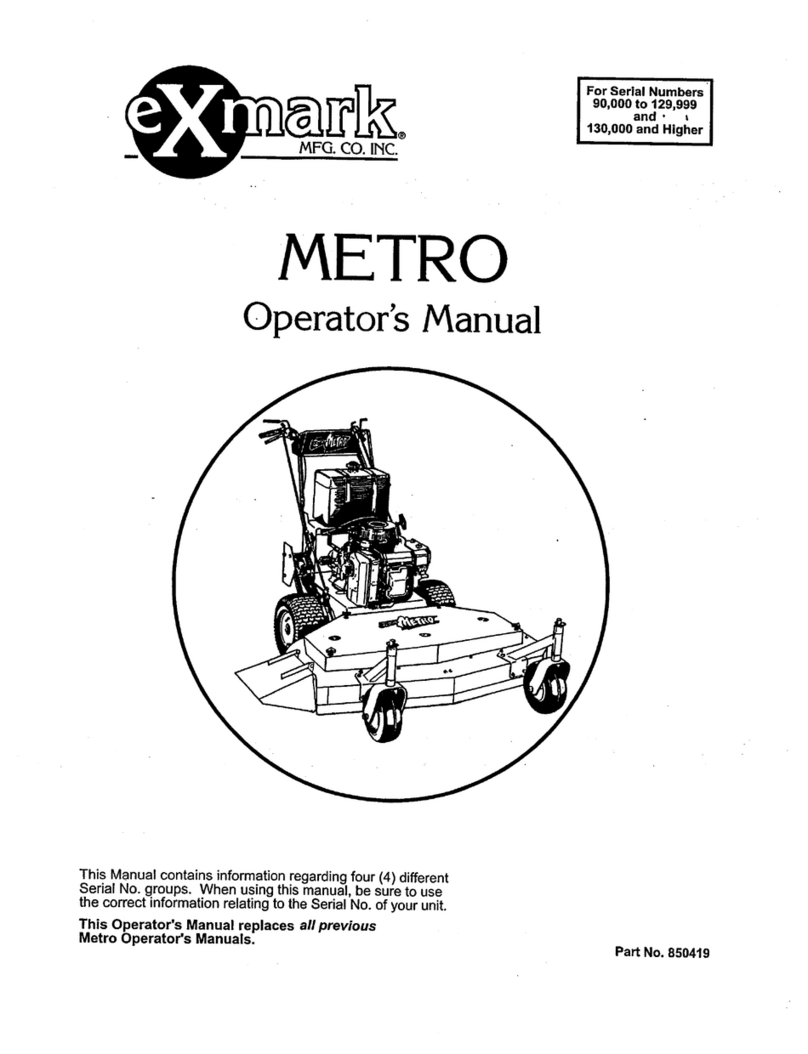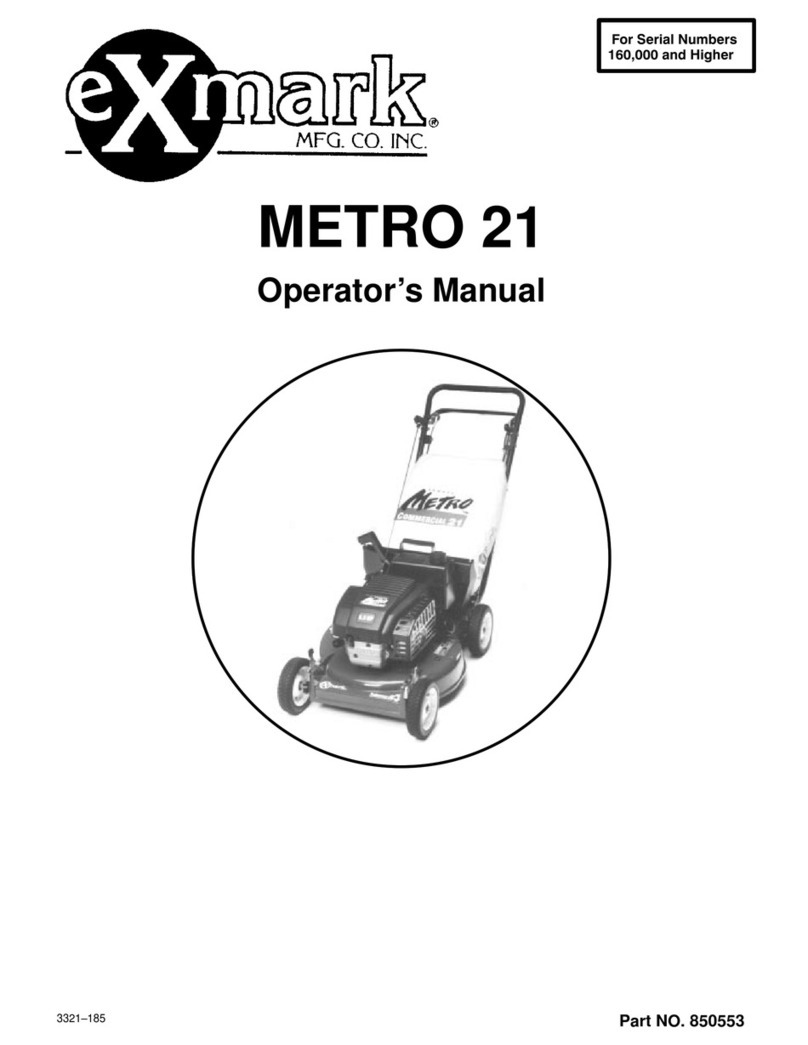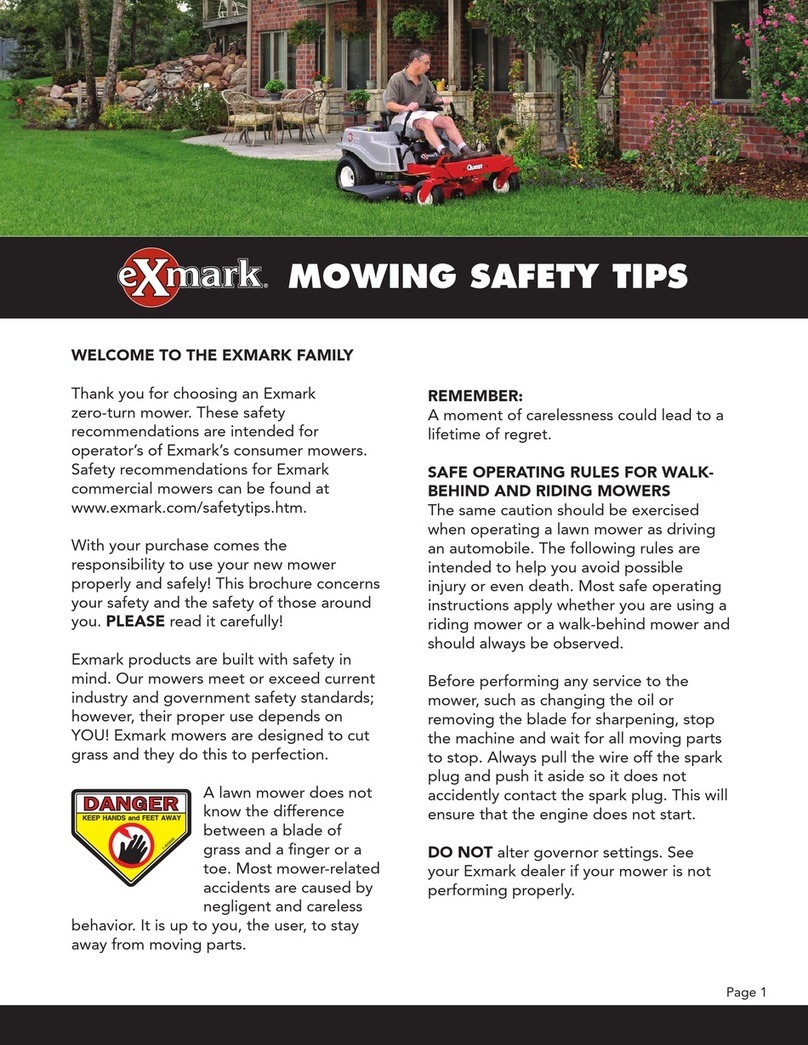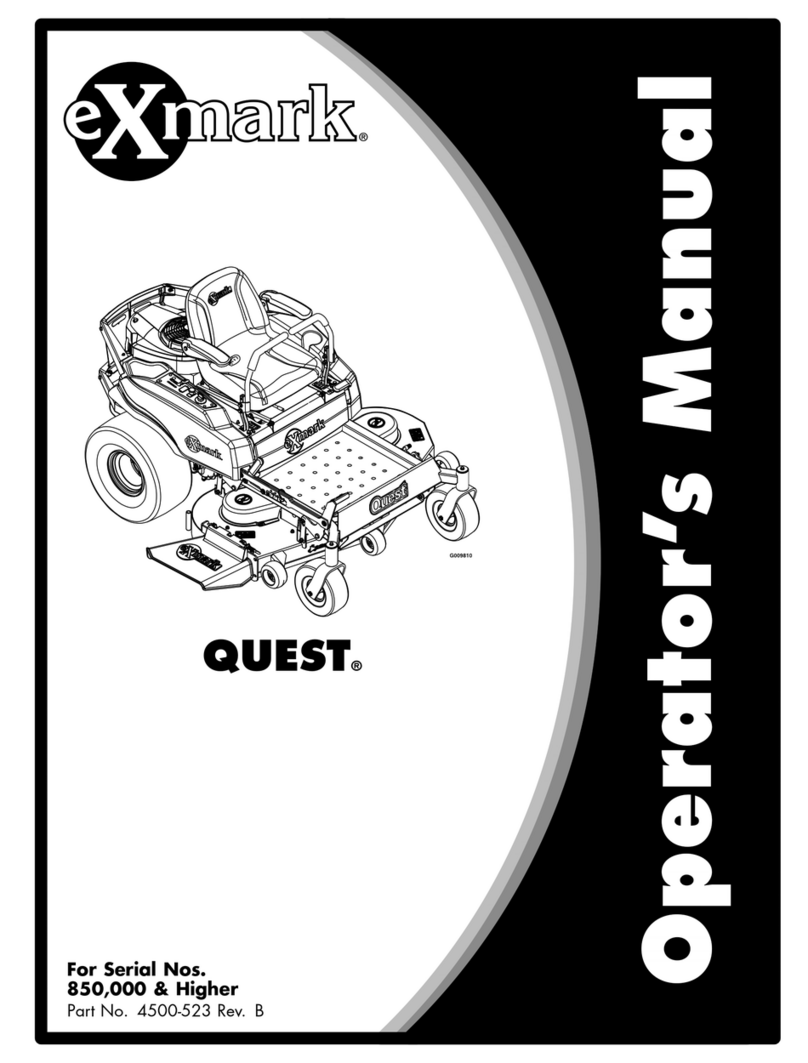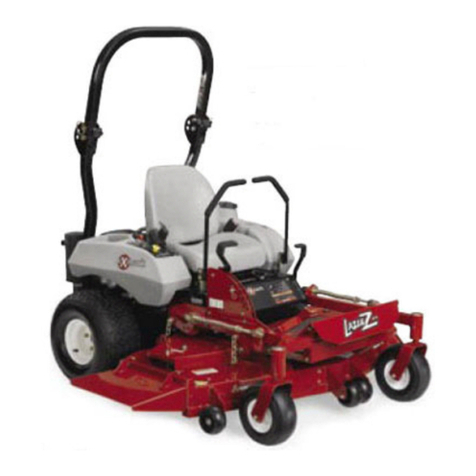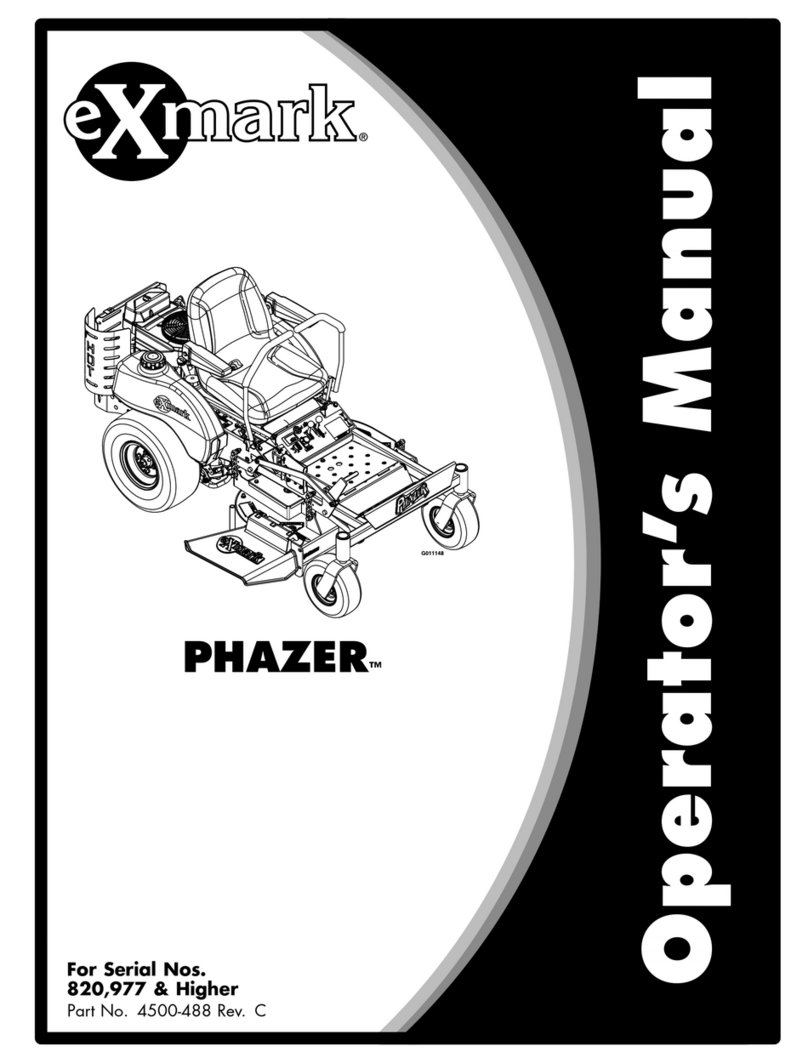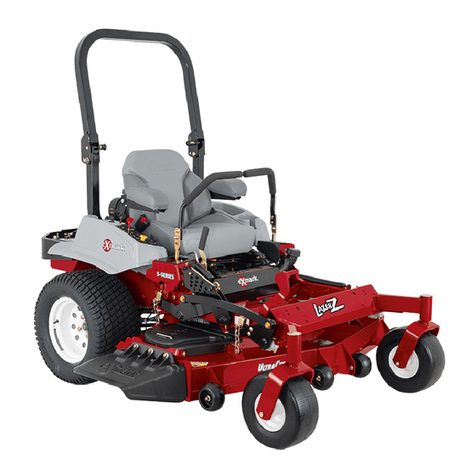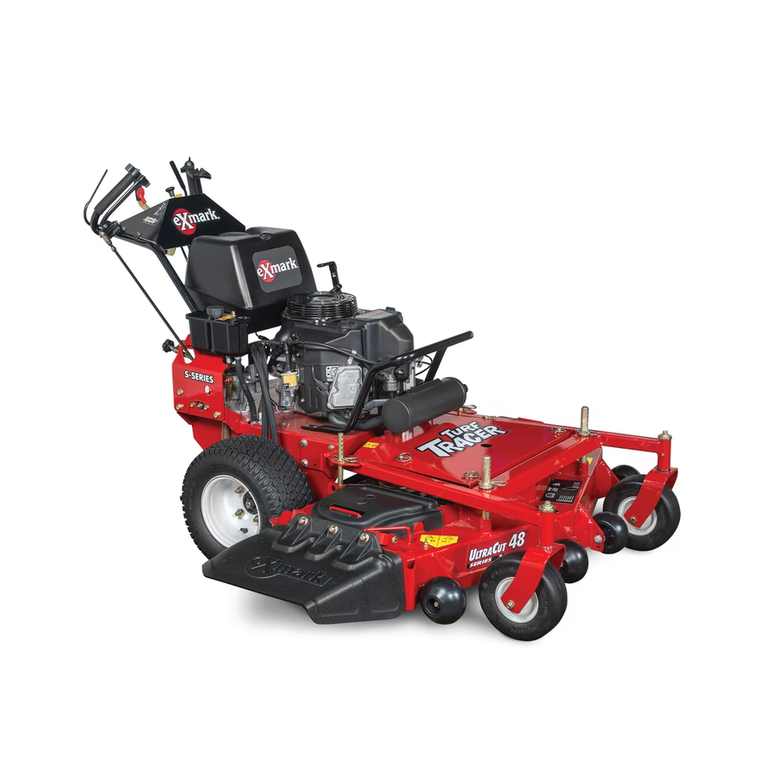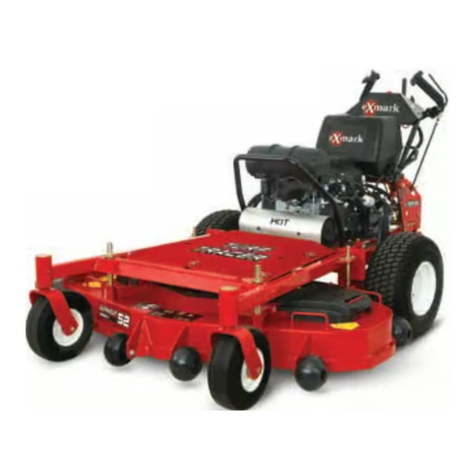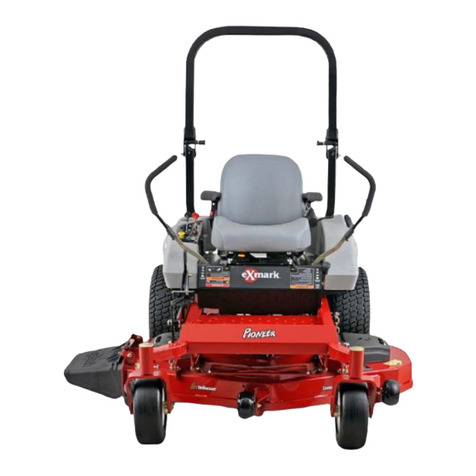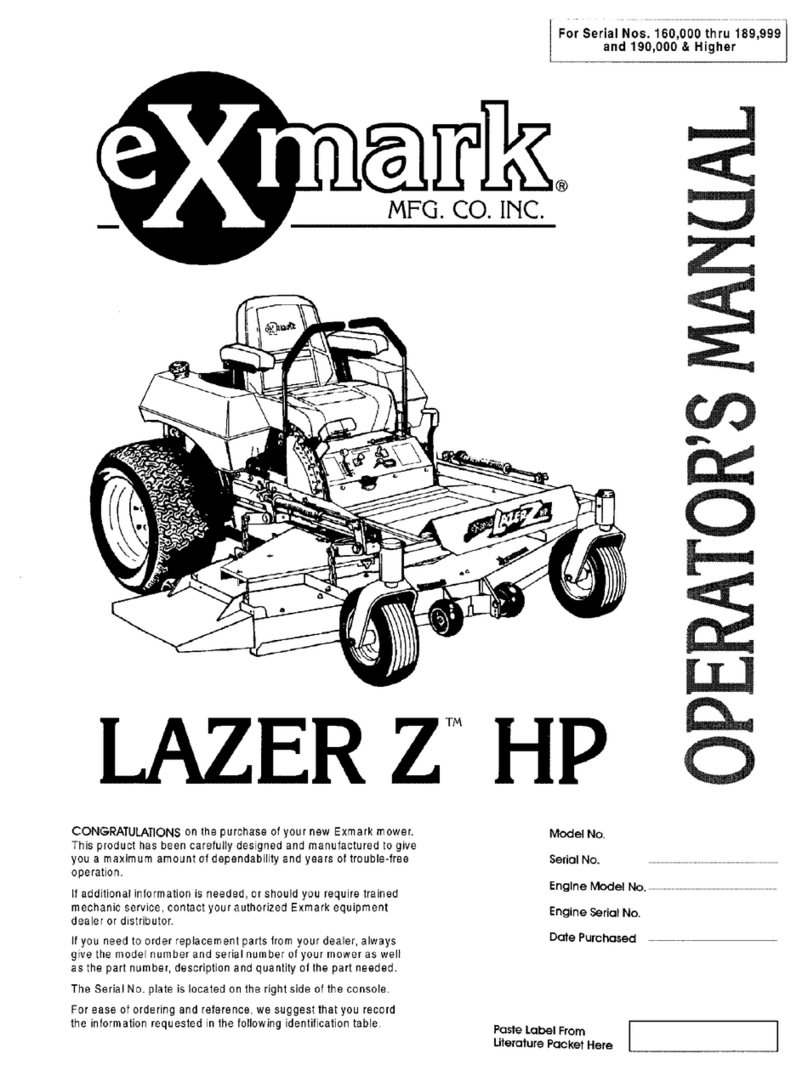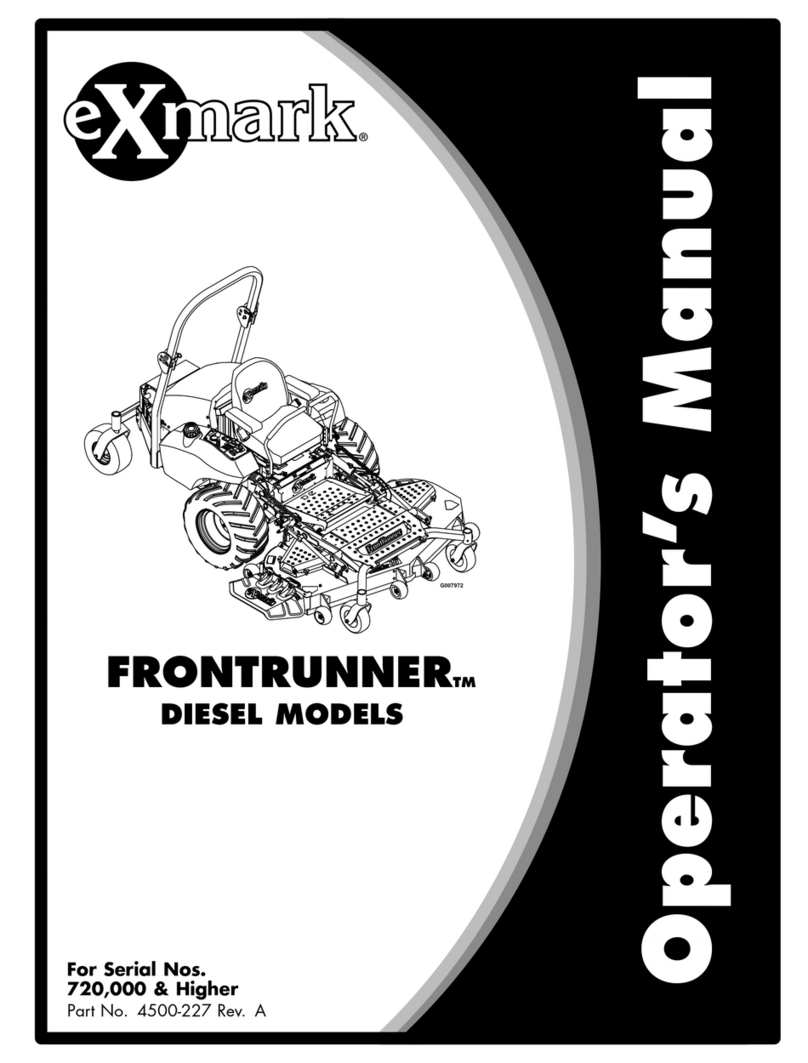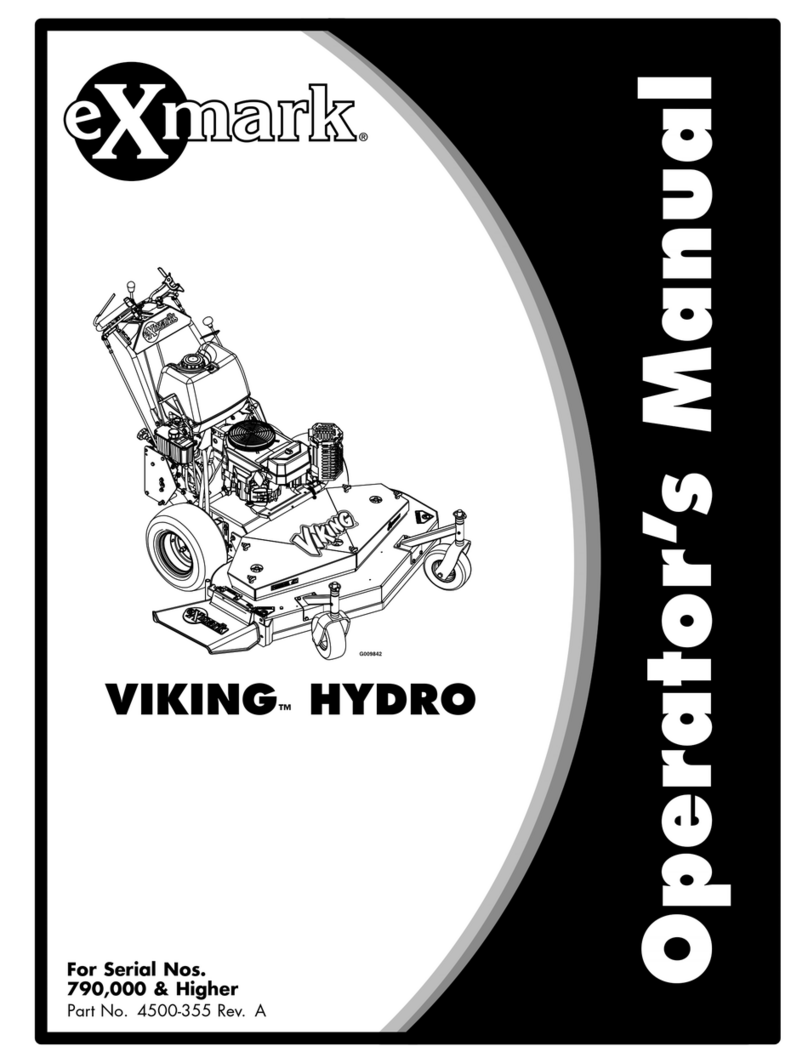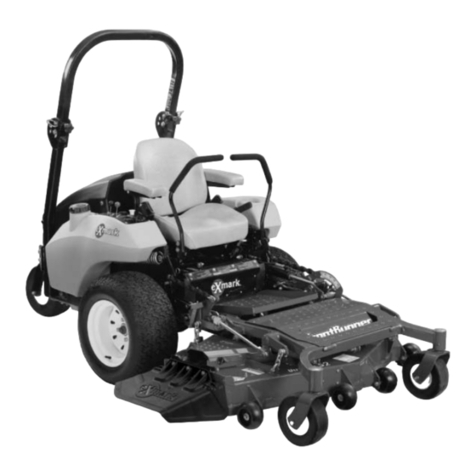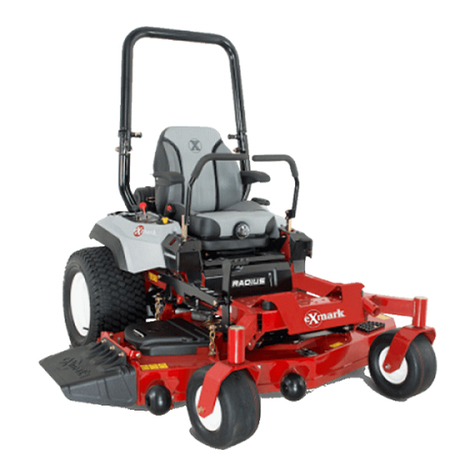
Page 2 of 5
109-6457 Rev. A
Uncrate Unit
1. Remove tractor and mower deck from their
crates.
Servicing the Battery
The machine is shipped with a filled lead acid
battery.
1. Remove battery cover from machine.
DANGER
POTENTIAL HAZARD
♦Charging the battery may produce explosive
gasses
WHAT CAN HAPPEN
♦Battery gasses can explode causing serious
injury.
HOW TO AVOID THE HAZARD
♦Keep sparks, flames, or cigarettes away from
battery.
♦Ventilate when charging or using battery in an
enclosed space.
♦Make sure venting path of battery is always
open once battery is filled with acid.
2. Check the voltage of the battery with a digital
voltmeter. Locate the voltage reading of the
battery in the table below and charge the battery
for the recommended time interval to bring the
charge up to a full charge of 12.6 volts or greater.
IMPORTANT: Make sure the negative battery
cables are disconnected and the battery charger
used for charging the battery has an output of 16
volts and 7 amps or less to avoid damaging the
battery (see chart below for recommended charger
settings).
Voltage
Reading Percent
Charge
Maximum
Charger
Settings
Charging
Interval
12.6 or greater 100% 16 volts /
7 amps No Charging
Required
12.4 – 12.6 75 – 100% 16 volts /
7 amps 30 Minutes
12.2 – 12.4 50 – 75% 16 volts /
7 amps 1 Hour
12.0 – 12.2 25 – 50% 14.4 volts /
4 amps 2 Hours
11.7 – 12.0 0 – 25% 14.4 volts /
4 amps 3 Hours
11.7 or less 0% 14.4 volts /
2 amps 6 Hours
or More
CAUTION
POTENTIAL HAZARD
♦If the ignition is in the “ON” position there is
potential for sparks and engagement of
components.
WHAT CAN HAPPEN
♦Sparks could cause an explosion or moving
parts could accidentally engage causing
personal injury.
HOW TO AVOID THE HAZARD
♦Be sure ignition switch is in the “OFF” position
before charging the battery.
3. Connect the negative battery cables.
NOTE: If the positive cable is also disconnected,
connect the positive (red) cable to the positive
battery terminal first, then the negative (black)
cable and green/white wire to the negative battery
terminal. Slip insulator boot over the positive
terminal.
NOTE: If time does not permit charging the
battery, or if charging equipment is not available,
connect the negative battery cables and run the
vehicle continuously for 20 to 30 minutes to
sufficiently charge the battery.
Checking Tire Air Pressure
1. Check the air pressure in the drive tires. Proper
inflation for drive tires is 12-16 psi (83-110 kPa).
2. Adjust the tire pressure within 12-16 psi
(83-110 kPa) range to make the tire
circumferences match as closely as possible.
3. The front caster tires are semi-pneumatic. No
adjustment is necessary.
Installing the Fuel Tank
1. Apply retaining adhesive “Fel-Pro ProLock
Retaining I or Retaining II” or “Loctite RC 609 or
680” on the two threaded studs from the bolt bag
and install into the two left holes underneath fuel
tank. Install the fuel tank on top of the fuel tank
support with the studs going through the slots in
the support.
2. Install two 5/16 x 3/4 screws with a 5/16 SAE flat
washer and 5/16 lock washer into the threaded
holes in the right side of the fuel tank. Do not
over tighten.
3. Place a 5/16 SAE flat washer, then a spring,
over each of the studs and fasten with a 5/16
nyloc nut. Tighten 5/16 nyloc nut fully then back
WARNING: Battery posts, terminals, and related
accessories contain lead compounds, chemicals
known to the State of California to cause cancer and
reproductive harm. Wash hands after handling.
